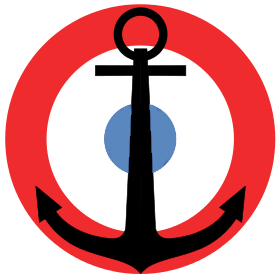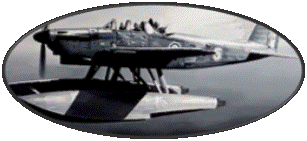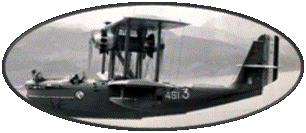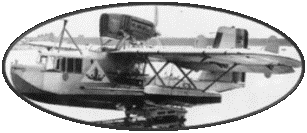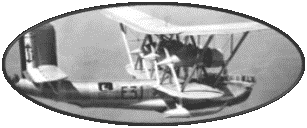 |
Site en Français
|
|
LATECOERE 302
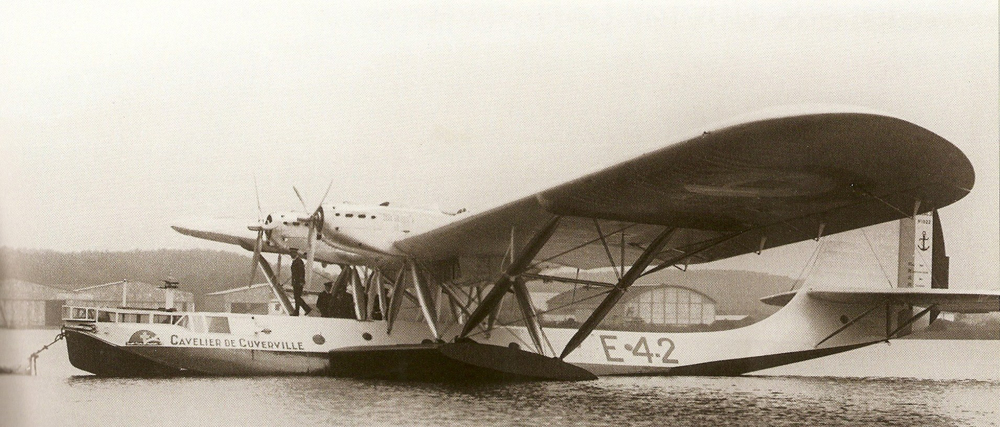
Technical
Specifications
|
Type
|
Seaplane quadrimotor reconnaissance
|
Date first flight
|
January
20, 1936
|
|
Wingspan
|
44,20 m
|
Lenght
|
26,16 m
|
|
Height
|
7,98 m
|
Wing Area
|
255,66 m2
|
|
Empty Weight
|
13230 Kg
|
Max. Takeoff Weight
|
24000 Kg
|
|
Cruising Speed
|
162 km/h.
|
Maximum Speed
|
240 km/h at 2000m
|
|
Climbing Speed
|
3500m in 45mn
|
Service ceilling
|
5800m
|
|
Range
|
3250 kms
|
Crew
|
8 Men
|
|
Motorization
|
4 Hispano-Suiza
12Ydrs engines in line of 835h each taking off
|
|
Armament
|
2 7.5mm Darne machine
guns in the front turret
1 7.5mm Darne machine gun on each side at the rear of the
fuselage
4 bombs of 75Kgs
|
3
Latécoère 302 have
been built since the date of the first flight :
- E4-1
- "GUILBAUD"
- E4-2
- "CAVELIER
DE CUVERVILLE"
- E4-3
- "MOUNEYRES"
The 3 Aircraft are listed
in the list below:

In 1928, the Navy's Technical
Services issued a program to equip the Navale Aviation with a four-engine
long-range seaplane capable of carrying 1000kg of payload.3 aircraft
were in competition for this competition: the Blériot 190,
the Lioré & Olivier LéO27 and the Latécoère
Laté 302. The latter is the military version of the Late
300 postal seaplane, designed to operate on the Dakar-Natal route.
This Laté 300, registered F-AKCU, made its first flight in
1931, but sank during tests on the Etang de Berre in December of
the same year. Refloated, repaired and modernized, it could resume
its tests in October 1932, under a new registration: F-AKGF and
under the name "La Croix du Sud". It then undertook a
series of demonstration flights that received a lot of media coverage:
on January 1st 1934, it linked the Etang De berre to Saint-Louis
in Senegal, a distance of 3800 km. It will cross the South Atlantic
in a flight of nearly 19 hours. These flights will largely highlight
the qualities of the aircraft, and Air France and the Aéronautique
Navale show a definite interest in the new aircraft, and each order
3 seaplanes.
The modifications for the civil version give birth to the Laté
301 and the three aircraft are registered: F-AOIK "Orion",
F-AOIL "Eridan" and F-AOIM "Nadir". They are
powered by four Hispano-Suiza 12Nbr Hispano-Suiza engines, each
rated at 650 hp. The first of the Laté 301s, F-AOIK "Orion"
made its first flight on September 7, 1935. The three Laté
301s were eventually renamed "City of Buenos Aires", "City
of Rio de Janeiro" and "City of Santiago de Chile".
The military version, Laté 302, was manufactured after the
civil aircraft. Similar in design to the civilian Laté 301s,
they will be powered by a more powerful engine: four Hispano-Suiz
12Ydrs2 engines with boosters, each developing 930 bhp. In January
1936, the Navy gave each of the aircraft a name. They become "GUILBAUD",
"CAVELIER DE CUVERVILLE" and "MOUNEYRES". The
first Laté 302, the "GUILBAUD", made its first
flight on 20 January 1936. Following manufacturer's tests, modifications
are made, in particular on the position of the firing posts, whose
initial position caused vibrations of the rear part of the fuselage.
At the end of March 1936, the aircraft is handed over to the Technical
Services for official tests at Saint-Raphael. The last seaplane,
the "MOUNEYRES" will be completed in April 1936.
The three Laté 302s will be assigned to the E-4 Squadron,
based on the Etang de Berre until April 1938, then to Lanvéoc-Poulmic
. At the beginning of 1938, the Navy will recover one of the Air
France aircraft, the "City of Santiago de Chile", which
will be renamed "Lieutenant de Vaisseau De l'ORZA". After
receiving military equipment, the aircraft will join Escadrille
E4, based in Dakar at the outbreak of the conflict. In August 1939,
the Aéronautique Navale requisitioned the other two Air France
Laté 301s.
Until the Armistice, seaplanes were used for surveillance missions
between the Channel coast and West Africa. On 20 May 1940, the Laté
301 "De l'ORZA" left Dakar for Biscaroose for repairs.
Its condition not allowing it to escape, it will fall into German
hands.
After the Armistice, E-4 Squadron became 4-E on August 1st 1940.
The "civilian" Trois Laté 301s were returned to
Air-France and the Troix Laté 302s were used until 1941:
the lack of spare parts put an end to their career and they had
to be scrapped. The "CAVELIER DE CUVERVILLE" made its
last flight in April 1941, the "GUILBAUD" in June and
the "MOUNEYRES" at the end of the year.
Versions
The Latécoère
302 was built in one version
Bibliography
No known books on this aircraft.
Photos
Album
|
